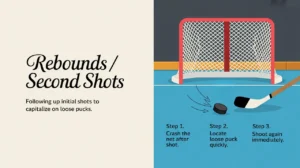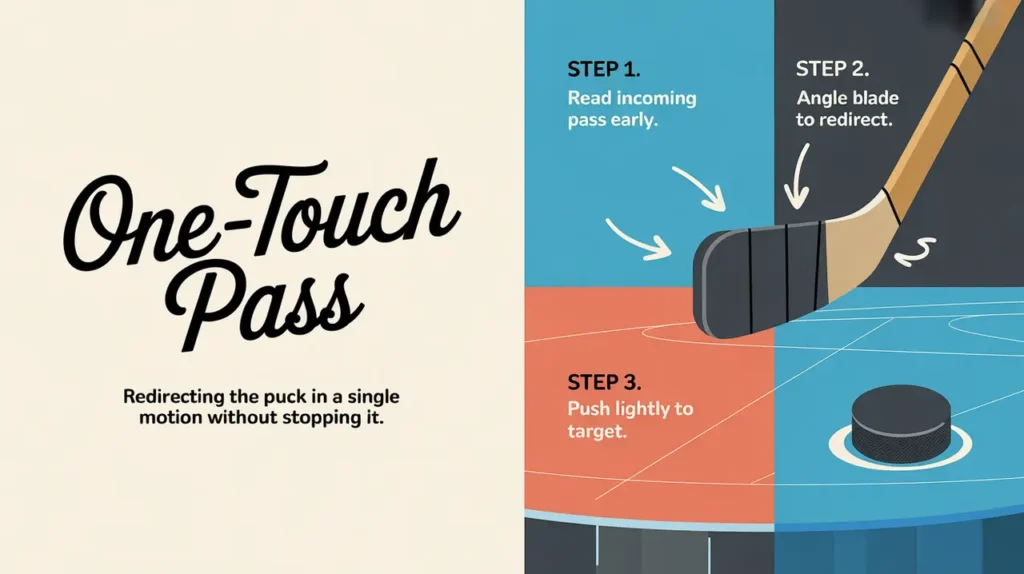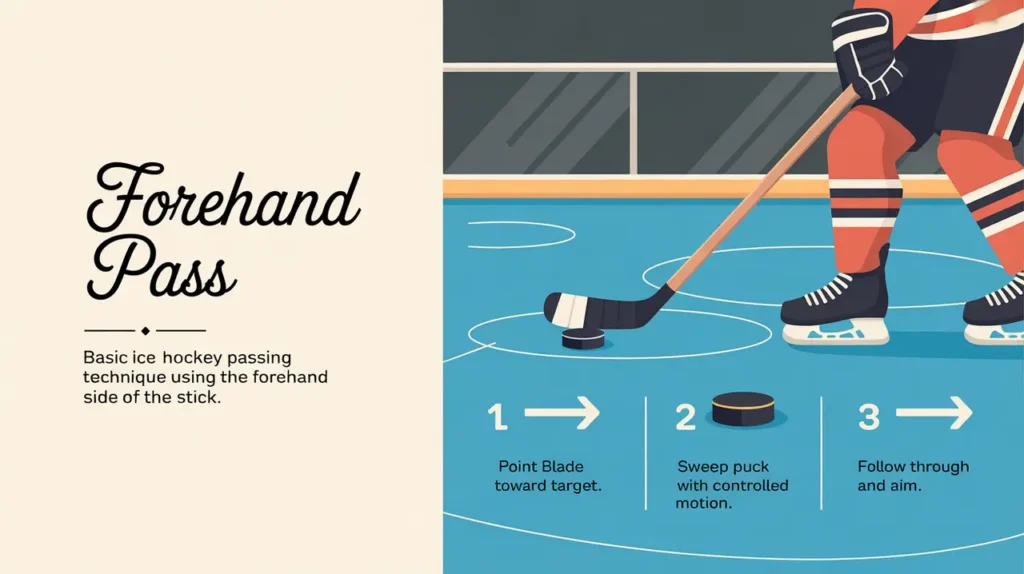Jim’s Intro to Backhand Pass
Hi folks, Jim here, the only commentator who once hurt his hand trying to backhand pass the puck across the rink. It all made sense later when a kind coach explained that the stick, not the hand, was the right instrument for the pass.
What is a backhand pass?
A backhand pass is made using the back side of the stick blade to move the puck to a teammate. It’s trickier than a forehand pass because it offers less control and power, but it’s invaluable for quick, deceptive plays in tight spaces or unexpected angles.
How does it work?
The backhand pass relies on technique, touch, and blade awareness:
- Hand Position: Keep your hands in a relaxed, natural position for better control.
- Blade Angle: Slightly close the blade to keep the puck flat, since the backhand naturally wants to lift it.
- Weight Transfer: Shift from your back foot to front to generate power.
- Sweep Motion: Use a smooth, controlled sweep across your body to push the puck.
- Follow Through: Point the back of your blade toward the target to guide the puck.
- Eyes Up: Read the lane and make sure your teammate is ready. Backhand passes can surprise even them.
How do you make good decisions with it?
- Use It in Tight Spaces: Backhand passes excel when you don’t have time to turn your body for a forehand.
- Keep It Short: Longer backhand passes are harder to control and easier to intercept.
- Sell the Fake: Defenders often don’t expect a backhand, making it great for disguising intent.
- Mind the Angle: Adjust blade tilt to keep the puck low and accurate.
- Don’t Force It: If the lane isn’t there, reset or pivot to your forehand.
How do you master it?
Mastering the backhand pass requires focused reps and feel. Players practice short, accurate passes on both sides, then build up to moderate distances. Passing drills through cones or into tight targets sharpen control and touch.
What does it look like when done right?
A clean backhand pass looks smooth, quick, and surprising. The puck stays flat, slides cleanly to a teammate, and often catches defenders off guard.
Commentator’s Corner
Jim’s Take
A good backhand pass is like a no-look dish in basketball. Defenders are left wondering where it came from.
Parent Tip
Encourage players not to shy away from the backhand. Confidence here builds creativity and adaptability.
Player Tip
Practice backhand passes daily. Focus on blade angle and follow-through to keep them accurate.
A Final Thought
The backhand pass may not be flashy, but it’s a crafty tool. Master it, and you’ll add a whole new layer of deception and versatility to your playmaking.









